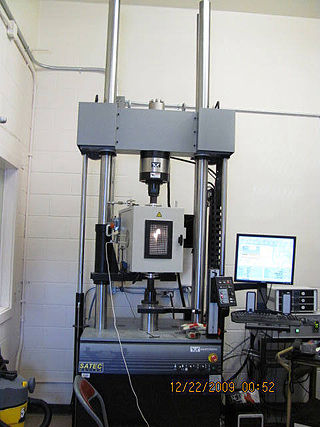Related Research Articles

Christopher Wolfgang John Alexander was an Austrian-born British-American architect and design theorist. He was an emeritus professor at the University of California, Berkeley. His theories about the nature of human-centered design have affected fields beyond architecture, including urban design, software, and sociology. Alexander designed and personally built over 100 buildings, both as an architect and a general contractor.
Evidence-based design (EBD) is the process of constructing a building or physical environment based on scientific research to achieve the best possible outcomes. Evidence-based design is especially important in evidence-based medicine, where research has shown that environment design can affect patient outcomes. It is also used in architecture, interior design, landscape architecture, facilities management, education, and urban planning. Evidence-based design is part of the larger movement towards evidence-based practices.
In the construction industry, the 1:5:200 rule is a rule of thumb that states that:
If the initial construction costs of a building is 1, then its maintenance and operating costs over the years is 5, and the business operating costs is 200.

Building science is the science and technology-driven collection of knowledge in order to provide better indoor environmental quality (IEQ), energy-efficient built environments, and occupant comfort and satisfaction. Building physics, architectural science, and applied physics are terms used for the knowledge domain that overlaps with building science. In building science, the methods used in natural and hard sciences are widely applied, which may include controlled and quasi-experiments, randomized control, physical measurements, remote sensing, and simulations. On the other hand, methods from social and soft sciences, such as case study, interviews & focus group, observational method, surveys, and experience sampling, are also widely used in building science to understand occupant satisfaction, comfort, and experiences by acquiring qualitative data. One of the recent trends in building science is a combination of the two different methods. For instance, it is widely known that occupants' thermal sensation and comfort may vary depending on their sex, age, emotion, experiences, etc. even in the same indoor environment. Despite the advancement in data extraction and collection technology in building science, objective measurements alone can hardly represent occupants' state of mind such as comfort and preference. Therefore, researchers are trying to measure both physical contexts and understand human responses to figure out complex interrelationships.
Building performance is an attribute of a building that expresses how well that building carries out its functions. It may also relate to the performance of the building construction process. Categories of building performance are quality, resource savings and workload capacity. The performance of a building depends on the response of the building to an external load or shock. Building performance plays an important role in architecture, building services engineering, building regulation, architectural engineering and construction management. Furthermore, improving building performance is important for addressing climate change, since buildings account for 30% of global energy consumption, resulting in 27% of global greenhouse gas emissions. Prominent building performance aspects are energy efficiency, occupant comfort, indoor air quality and daylighting.

Construction Industry Council (CIC) is the representative forum for professional bodies, research organisations and specialist business associations in the United Kingdom construction industry.

In urban planning, walkability is the accessibility of amenities by foot. It is based on the idea that urban spaces should be more than just transport corridors designed for maximum vehicle throughput. Instead, it should be relatively complete livable spaces that serve a variety of uses, users, and transportation modes and reduce the need for cars for travel.
Architectural design values make up an important part of what influences architects and designers when they make their design decisions. However, architects and designers are not always influenced by the same values and intentions. Value and intentions differ between different architectural movements. It also differs between different schools of architecture and schools of design as well as among individual architects and designers.
BREEAM, first published by the Building Research Establishment (BRE) in 1990, is the world's longest established method of assessing, rating, and certifying the sustainability of buildings. More than 550,000 buildings have been 'BREEAM-certified' and over two million are registered for certification in more than 50 countries worldwide. BREEAM also has a tool which focuses on neighbourhood development.
In architecture, open building is an approach to the design of buildings that takes account of the possible need to change or adapt the building during its lifetime, in line with social or technological change. Open building design seeks to co-ordinate inputs from different professions, users of the building, and other interests associated with the locality.

Amon Wilds was an English architect and builder. He formed an architectural partnership with his son Amon Henry Wilds in 1806 and started working in the fashionable and growing seaside resort of Brighton, on the East Sussex coast, in 1815. After 1822, when the father-and-son partnership met and joined up with Charles Busby, they were commissioned—separately or jointly—to design a wide range of buildings in the town, which was experiencing an unprecedented demand for residential development and other facilities. Wilds senior also carried out much work on his own, but the description "Wilds and Busby" was often used on designs, making individual attribution difficult. Wilds senior and his partners are remembered most for his work in post-Regency Brighton, where most of their houses, churches and hotels built in a bold Regency style remain—in particular, the distinctive and visionary Kemp Town and Brunswick estates on the edges of Brighton, whose constituent parts are Grade I listed buildings.

MOD Abbey Wood is a Ministry of Defence establishment at Filton, Bristol, United Kingdom. The purpose-built site houses the MOD's Defence Equipment and Support and Submarine Delivery Agency procurement organisations. It was opened by Queen Elizabeth II in July 1996, after which various government departments relocated to the site.
Constructing Excellence is a United Kingdom construction industry membership organisation created in 2003, the only such which draws its member organisations from across the industry supply chain, ranging from clients, through contractors and consultants, to suppliers and manufacturers of building materials and components. Constructing Excellence attempts to apply the reforms recommended in the 1994 Latham and 1998 Egan Reports, having absorbed several bodies established following those reports. In August 2016, Constructing Excellence became part of BRE, but retains its identity and core purposes.
The Cambridge Institute for Sustainability Leadership, formerly the Cambridge Programme for Sustainability Leadership and the Cambridge Programme for Industry, is part of the School of Technology within the University of Cambridge.

David Lloyd Jones AA DIP, RIBA, FRSA is a founding partner of Studio E LLP, an architectural practice established in London in 1994. He has been described as "a godfather of the sustainable architecture movement in the UK". Lloyd Jones has been heavily involved in both promoting 'green' design and demonstrating it in practice. He has been responsible for a series of seminal bioclimatic buildings, including the National Farmers Union and Avon Insurance Head Office at Stratford upon Avon; the Solar Office Doxford International near Sunderland; Beaufort Court Zero Emissions Building at Kings Langley; Grange Park Opera House and the current new campus for The British College in Kathmandu. His book, Architecture and the Environment, was published in 1998. He is a founding member and chair of the charity Climate Change All Change.
Integrated modification methodology (IMM) is a procedure encompassing an open set of scientific techniques for morphologically analyzing the built environment in a multiscale manner and evaluating its performance in actual states or under specific design scenarios.

Matthew Carmona is an architect, planner and researcher based in the United Kingdom. His research focuses on the process of design governance and management of Public Space. He has taught at the University of Nottingham and The Bartlett, the latter since 1998.
The Construction Research and Innovation Strategy Panel (CRISP) was an initiative established in 1995 to identify and prioritise the research needs of the construction industry of the United Kingdom. It operated through a series of Task Groups, each dealing with a particular research topic, and each of which produced a report published on the CRISP website. Collated recommendations were passed to appropriate funding bodies. In 2005, CRISP was absorbed into the National Platform for the Built Environment.
Precise definitions of sustainable construction vary from place to place, and are constantly evolving to encompass varying approaches and priorities. In the United States, the Environmental Protection Agency (EPA) defines sustainable construction as "the practice of creating structures and using processes that are environmentally responsible and resource-efficient throughout a building's life-cycle from siting to design, construction, operation, maintenance, renovation and deconstruction." The Netherlands defines sustainable construction as "a way of building which aims at reducing (negative) health and environmental impacts caused by the construction process or by buildings or by the built-up environment." More comprehensively, sustainability can be considered from three dimension of planet, people and profit across the entire construction supply chain. Key concepts include the protection of the natural environment, choice of non-toxic materials, reduction and reuse of resources, waste minimization, and the use of life-cycle cost analysis.
Complementary architecture is a movement in contemporary architecture promoting architectural practice rooted in comprehensive understanding of context, aiming to contribute to the environment in such a way as to continue and improve or emphasise its preexisting qualities. Indispensable features of complementary architecture include sustainability, altruism, contextualism, endemism and continuity of specific regional design language.
References
- ↑ Page 6, Spencer, N. and Winch, G. (2002). How Buildings add value for clients, London: Thomas Telford. ISBN 0-7277-3128-9
- ↑ Macmillan, S. (2004) Preface to Designing Better Buildings: quality and value in the built environment, London: Spon Press. ISBN 0-415-31525-5
- ↑ Construction Industry Council. DQI Online – How well is your building designed? 1 October 2003
- ↑ "DQI online service gets recognition from BIFM – The Structural Engineer" (PDF). elsalvadorproject.org.uk. 2 November 2004. Archived from the original (PDF) on 8 October 2011. Retrieved 8 September 2009.
- ↑ Wheeler, P. (2004) 'Housing quality indicators in practice' in Macmillan, S. (2004) Designing Better Buildings: quality and value in the built environment, London: Spon Press. ISBN 0-415-31525-5
- ↑ "Housing quality indicators - GOV.UK". gov.uk. 7 March 2023.
- ↑ http://webarchive.nationalarchives.gov.uk/20130124042007/http://www.dh.gov.uk/prod_consum_dh/groups/dh_digitalassets/@dh/@en/documents/digitalasset/dh_082085.pdf [ bare URL PDF ]
- ↑ Gann et al. (2003), Design Quality Indicator as a tool for thinking: Building Research and Information, London: Spon Press. doi : 10.1080/0961321032000107564
- ↑ "DQI - Home". dqi.org.uk.
- ↑ "Schools version of DQI". Archived from the original on 20 February 2009. Retrieved 8 September 2009.
- ↑ Construction Industry Council. DQI for Schools Launched Archived 26 November 2006 at the Wayback Machine 8 December 2005
- ↑ Commission for Architecture and the Built Environment. Minimum Design Standards Launched May 2009
- ↑ "DQI - Design Quality Indicator - Health Buildings". Archived from the original on 22 July 2012. Retrieved 30 June 2012.